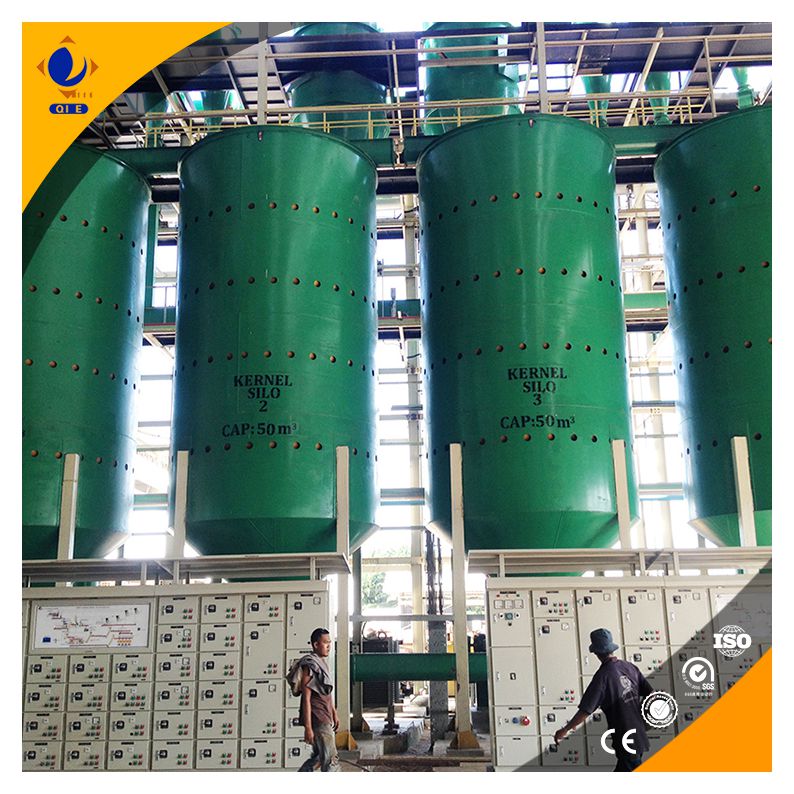
The PLC control system plays a central role in the entire palm oil pressing process, from feeding to pressing and then to oil - water separation. In the feeding stage, the PLC can precisely control the amount of raw materials fed into the system. By optimizing the feeding speed and quantity, it ensures a stable supply of palm fruits to the subsequent pressing stage, reducing the risk of over - or under - feeding.
During the pressing process, the PLC system adjusts the pressure and speed of the press according to the real - time status of the materials. This helps to extract the maximum amount of oil from the palm fruits while maintaining the quality of the oil. In the oil - water separation phase, the PLC controls the flow rate and separation parameters, achieving efficient separation of oil and water.
Logic optimization methods for the PLC system mainly involve adjusting the control algorithms based on historical data and real - time sensor feedback. For example, by analyzing the relationship between the feeding amount, pressing pressure, and oil output, the PLC can optimize its control strategy to improve the overall efficiency of the production line.
Pressure sensors are crucial in the palm oil production line. They are installed at key points such as the inlet and outlet of the press and the pipeline of the oil - water separator. These sensors can accurately measure the pressure changes during the production process. For instance, a sudden drop in pressure at the press outlet may indicate a blockage in the pipeline, allowing for timely maintenance.
Temperature sensors are also essential. They monitor the temperature of the press and the oil - water separator. Maintaining the appropriate temperature is vital for ensuring the quality of the oil and the normal operation of the equipment. High temperatures may cause the oil to oxidize, while low temperatures may affect the separation efficiency.

Flow sensors are used to measure the flow rate of raw materials, oil, and water in the pipeline. By accurately measuring the flow, the PLC system can adjust the production process in real - time. The data from these sensors are continuously collected and transmitted to the control center for further analysis.
Based on the data collected by sensors, fault early - warning models can be established. These models use algorithms to analyze the sensor data and predict potential faults. For example, if the pressure and temperature data deviate from the normal range for a certain period, the system will issue an early - warning signal, allowing operators to take preventive measures before a serious fault occurs.
The remote monitoring platform enables operators to monitor the production process from anywhere at any time. They can view real - time data, receive early - warning messages, and even control the equipment remotely. This significantly improves the efficiency of equipment maintenance and reduces the response time to faults.
Industry cases have shown that automation upgrades have a significant impact on capacity improvement and energy consumption reduction. After the automation transformation of a palm oil production line, the energy consumption can be reduced by about 15%. For example, the power consumption can be reduced from 25 KWH/ton oil to 21.25 KWH/ton oil.
The equipment availability rate can be increased to over 98%. This means that the production line can operate more stably, with less downtime for maintenance. As a result, the unit production capacity can be effectively improved, meeting the market demand more efficiently.

When selecting technologies, small and medium - sized oil enterprises should consider the compatibility of the equipment. The new sensors and control systems should be able to integrate seamlessly with the existing production line. Scalability is also important. As the enterprise grows, the system should be able to expand easily to meet the increasing production demand.
Moreover, sufficient attention should be paid to the training of operation and maintenance personnel. They need to have a good understanding of the new technologies and be able to operate and maintain the equipment correctly. This will ensure the long - term stable operation of the automated production line.
Automation upgrades using PLC control systems and industrial sensors offer great benefits to small and medium - sized oil enterprises. They can improve the stability of the production process, reduce energy consumption, and increase production capacity. By following the technical selection suggestions, these enterprises can achieve efficient and intelligent production.
Ready to transform your palm oil production line? Penguin Palm Oil Pressing Production Line integrates advanced PLC and industrial sensing technologies, helping enterprises achieve efficient, stable, and low - maintenance modern production.

